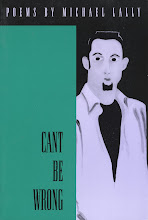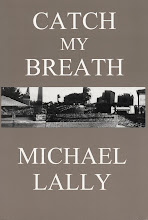Yesterday, I caught SINCE YOU WENT AWAY on TCM and had to get out the Kleenex.
In case you don’t know it, it’s a WWII home-front drama starring Claudette Colbert, Jennifer Jones, Shirley Temple, Hattie McDaniel, Monty Wooley, Robert Walker, Joseph Cotten, and Agnes Moorehead, among many others (including a young Guy Madison as a sweet hearted hunk of a sailor who looks like he flew in from the future—the 1950s to be exact—with his distressed pompadour hairstyle and cool charisma).
David O. Selznick produced it, and meant it to be a WWII epic in the mode of his great Technicolor triumph of only a few years earlier GONE WITH THE WIND.
Like that classic film, SINCE YOU WENT AWAY also focuses on war’s impact on women and the home, uses images of wounded soldiers to convey the tragedy of war, and co-stars the incredible Hattie McDaniel.
But SINCE YOU WENT AWAY is in black and white, at the height of Hollywood’s mastery of creating true art out of light and shadows without color. It is a beautiful movie to watch, with many, many frames suitable for printing and hanging on the wall as some of the greatest photography ever made.
The director was John Cromwell, whose work I’m unaware of otherwise, and I didn’t catch the cinematographer. But black and white movies as beautiful as this were almost commonplace by 1943 when this was made, so many cinematographers had mastered the medium.
There are elements typical of Hollywood “womens’ movies” of that time, including idealized love and romance and family life. But there are also no punches pulled when it comes to the cost of war.
Death is omnipresent, and the close up shots of wounded veterans in physical rehab learning to use the primitive prosthetic arms and legs of the period, though infused with upbeat cameos from many recognizable Hollywood character actors playing the less realistically injured veterans, must have been joltingly real for audiences of that time.
In fact, watching this movie with the realization that it was made in 1943, at what would turn out to be the midpoint of the war but no one could know for sure, and a time when finally the possibility of winning the war seemed real (’41 and ’42 being much bleaker in that respect), makes it even more powerful.
There are also the usual stereotypes, Hattie McDaniel’s black maid with the tough exterior but heart of gold who is constantly mispronouncing the multi-syllabic more intellectual sounding words she attempts to use regularly, with no family life other than the white family she’s working for.
But her character is fully rounded in her humanity, and as an actor she has a range of emotions to express and does so beyond the capacity of the majority of Hollywood actors of her time. And if her character is a bit of a cliché, so is “Mister Mahoney” who delivers the groceries with a terrible Irish accent and is chuckled at just as warmly if condescendingly by Claudette Colbert as she does at Hattie McDaniel’s “Fidelia.”
In fact Colbert plays a bit of a cliché herself, the WASP housewife and mother who has no clue how to run a household on her own let alone get a job to help the family unable to live on the departed husband and father’s officer’s salary.
The husband/father is the dominant presence in the movie, and much like the absence of men in THE WOMEN, his presence is felt in almost every scene, though he isn’t in any. An amazingly effective device, as is almost everything used in this movie to make it great.
Jennifer Jones is a revelation as she matures before our eyes without the help of anything other than her acting chops. The weakest link might be Shirley Temple, a little too big to be playing the innocent schoolgirl, and a little too stuck on her child star tics. But, she still pulls it off, because everyone around her is so terrific, and because she tries so hard you can’t help giving her credit for the effort.
Obviously a lot in this movie seems quaintly contrived, but in fact, from my reading and experience, very little of it is. It’s probably one of the least watched classic Hollywood films, whose imagery is most familiar—the shot of Jennifer Jones running alongside the train on the station platform smiling through her tears as she clings to her last contact with Robert Walker’s soldier off to the war has been used in so many Oscar and AFI montages, you probably think you’ve seen the movie by now.
And the iconic shot of Jones on the station platform after the train has gone, a tiny figure standing in a column of light casting a shadow many times her size is inimitable and, as I said above, worthy of framing and hanging on any wall whether home or museum.
If you’ve never seen this film, take the time to watch it some night, and just enjoy the beauty of the camera work, if nothing else (though I doubt you’ll be able to watch the whole thing without laughing out loud at least once or twice and getting misty eyed if not outright bawling a few times as well).
Subscribe to:
Post Comments (Atom)
















1 comment:
Just added it to my Netflix queue. Thanks for the tip.
T.
Post a Comment